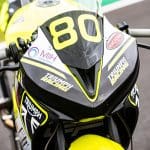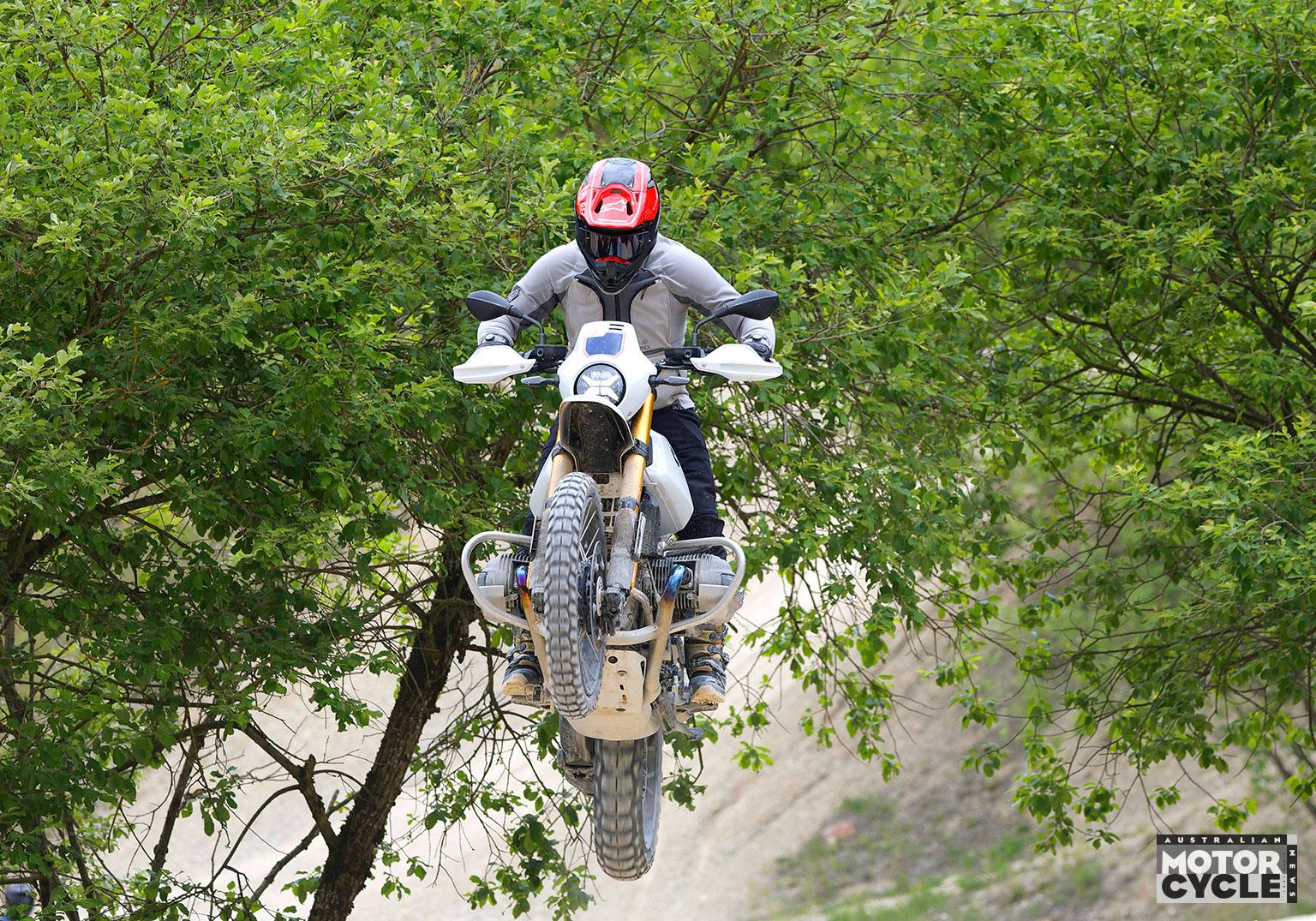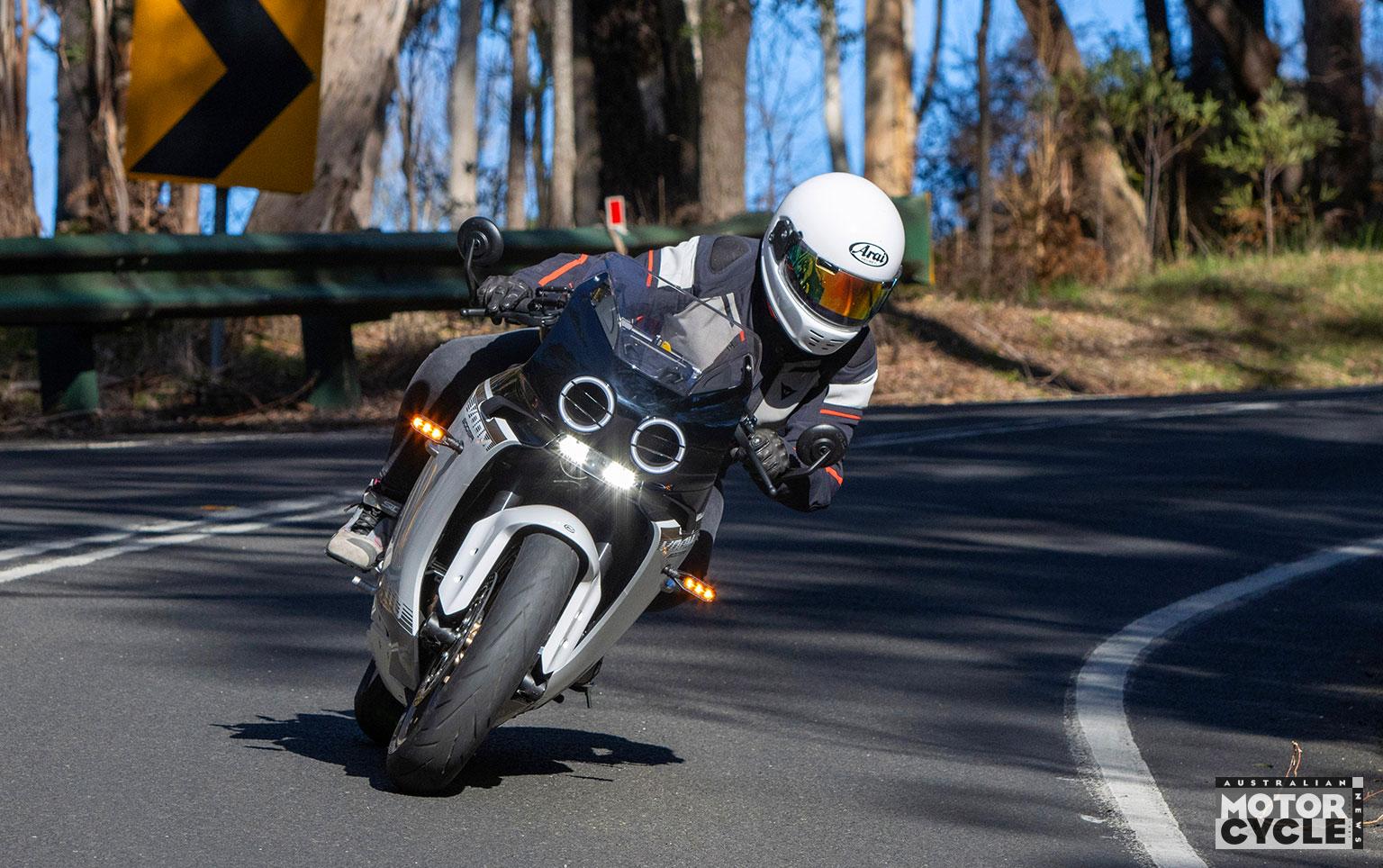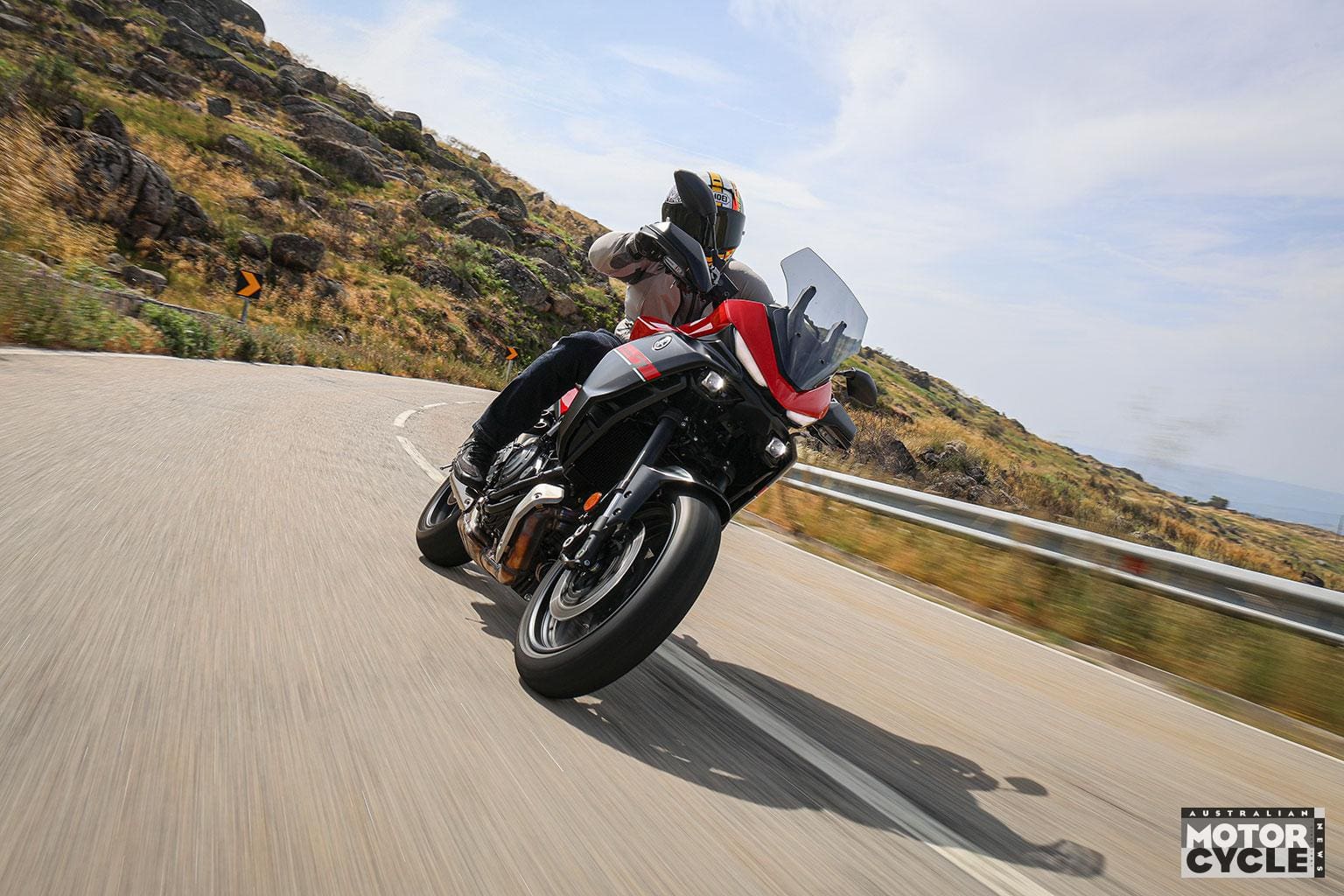Triumph now produces a race version of their sporty new Daytona 660 – so of course we decided to race it in front of 50,000 fans.
Triumph has done something a little bit special in producing a race version of their new roadgoing Daytona 660. Yes, many manufacturers have produced race versions of production street models, but the Triumph project differs from most because all the race components necessary to transform it into a razor-sharp track tool are available to the public via Triumph’s website or project-development partner PHR Performance. This is a factory racer or trackday bike you can buy, configure and build yourself – or allow experts to build to your spec.
I couldn’t wait to see what a full-on race-spec 660 Daytona triple would be like. On the street, it’s a sweetly balanced and punchy sports middleweight, ideal for newer riders who are happy to trade premium cycle parts and the absolute word in adjustability and electronic rider aids for a sub-$20k price point. Lavish it with a raft of well-chosen and developed track goodies and, instinctively, you feel it will become something special.
So it was that I jumped in with both feet when invited to race a 660 in a round of the furiously competitive Pirelli National Sportsbike championships in front of 50,000 race fans at Lincolnshire’s Cadwell Park. Run as a support race series in the British Superbike (BSB) championship, the series was created this year for young riders hoping to showcase their talents in front of the BSB teams. Young Aussie Jayden Martin is one such rider who has taken to Triumph’s Daytona 660 like a duck to water, finishing 11th in his first season in this class.

The racing is fast and close, while Cadwell – a glorious parkland circuit that swoops over rolling countryside before threading through woods and thrilling crowds with the most hair-raising jump in racing – is one of the most demanding tracks in Europe. Joining the series midway through the season and doing so with no practice was less than optimal preparation. But I couldn’t say no.
The middleweight sportsbike market has transformed in recent years, with manufacturers stepping away from intense and tightly focused 125+hp supersport machines in favour of bikes that cater for a younger, less experienced audience and those wanting a fun and responsive sports-styled machine, but nothing too radical. From the Yamaha R7 to the Aprilia RS660 to this, the new-for-2024 Daytona 660, a plethora of keenly priced sportsbikes has entered the market and this burgeoning race series shows the potential of these machines as much as it does riding talent.
Eligible bikes alongside the Daytona 660, R7 and RS660 include the Kawasaki Ninja 650 and Honda Hornet 750 – machines that many younger riders can directly relate to – and the series has quickly grown in popularity over the British summer, while similar series are already planned for the Italian CIV and German IDM series in 2025.
We hooked up with the highly professional Macadam Triumph Racing team, which also runs Jayden Martin, and crossed our fingers.
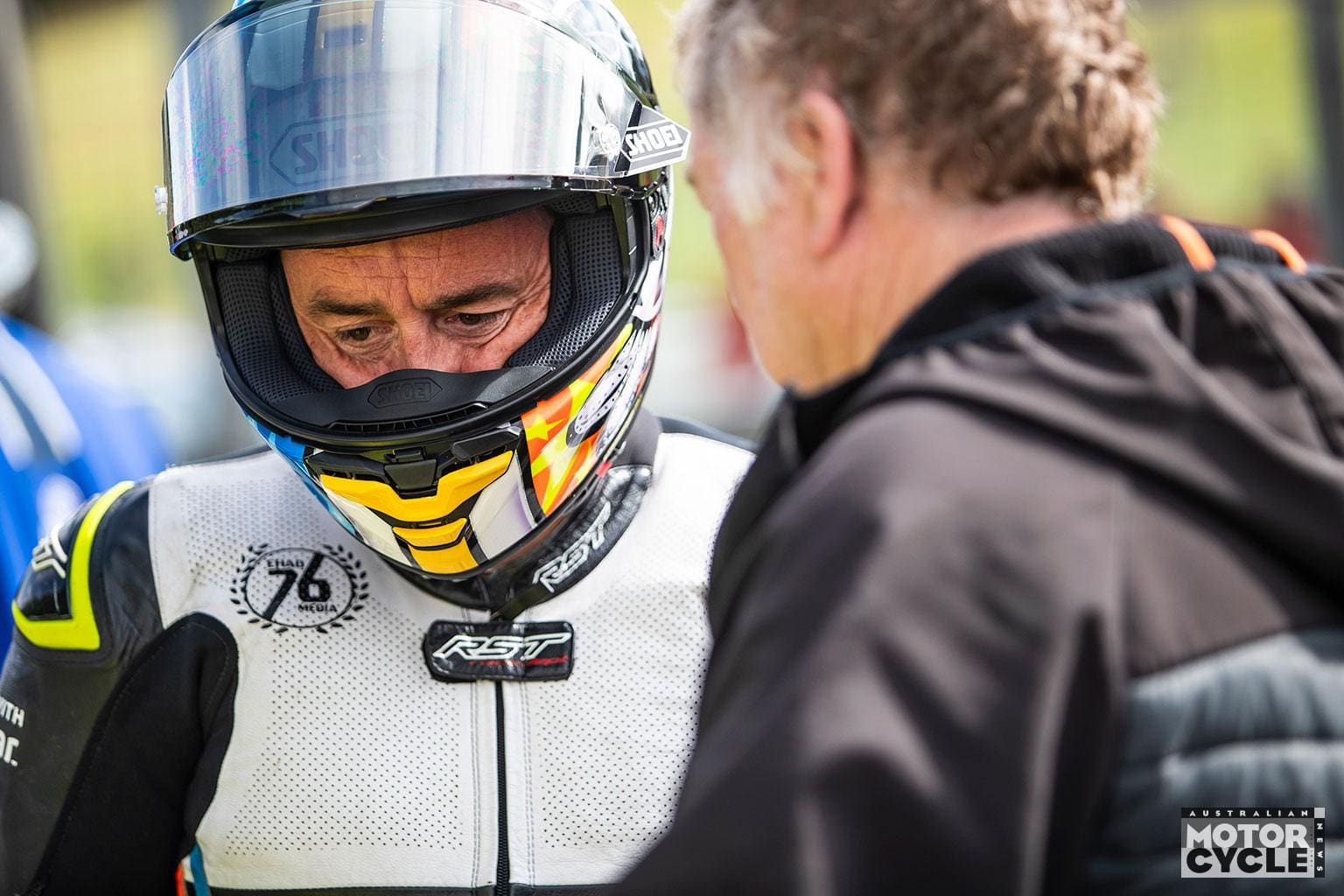
Free Practice begins
Cadwell Park holding area. Nerves are building. The majority of riders around me are kids, some as young as 16. Then there are other more experienced riders like Richard Cooper, two-time National Superstock champion and North West 200 winner. Another rising star is Italian Edoardo Colombi, already the 2023 Italian Aprilia RS660 Trophy champion. This is going to be as wild as it is fast.
My Triumph has been immaculately prepared by and, to add to the tension, it’s raining. We’ve opted for full Metzeler wets to soften the race-kit Bitubo suspension a little to help me feel the surface better. A softer throttle map is also active, along with reduced engine braking. This Daytona 660 may have started life as a stock road machine but, fitted with PHR Racing-developed factory race parts, is now a fully adjustable race bike, with changeable engine braking and throttle maps – both of which can be tweaked on the move.
The first few laps of FP1 (Free Practice 1) are predictably tentative. I first rode Cadwell Park back in 1997, before most of the other riders were born, so I know where I’m going. But I need to get used to both the new bike and the sheer intensity of the elbows-out attack dogs with whom I’m sharing the track. By lap two I feel at home and have the now fully adjustable pegs on their lowest setting, with the clip-on race ’bars set nice and wide. The Bitubo steering damper feels a little stiff, but otherwise the combination of the Bitubo fork kit upfront and complete rear shock gives a great feel – enough for me to push.
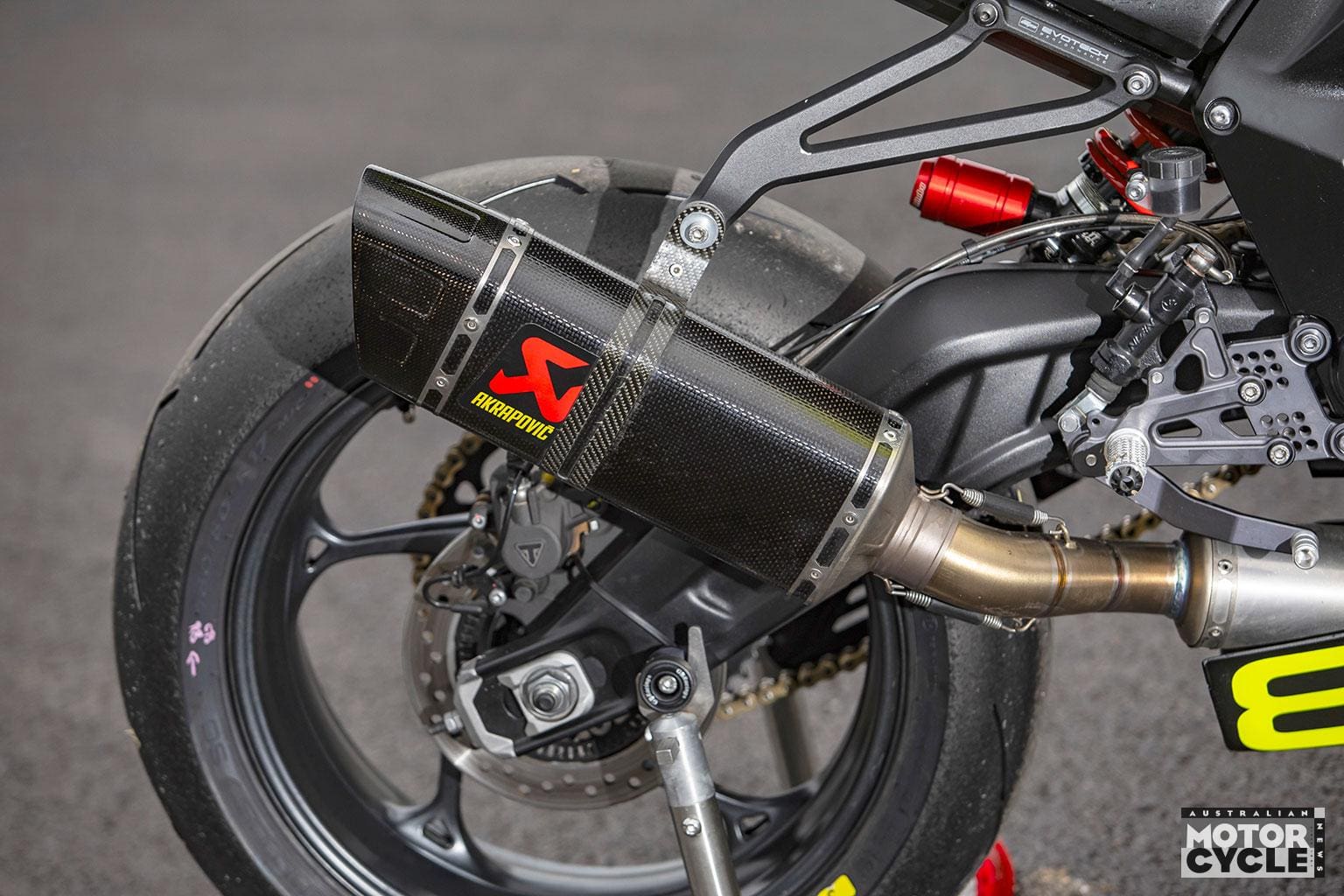
While the chassis is heavily kitted, the Daytona 660’s inline triple is still in standard form, albeit with revised fuelling to compensate for the full Akrapovic race exhaust system. Quoted peak power is 72kW (97hp), and we have a slightly restricted throttle to make all the bikes on the grid theoretically equal. In the softer wet riding mode, the delivery is lovely. The 660 is flexible, torquey and quick – but not scary quick, giving me time to think about the track and the conditions. By the end of the very wet 30-minute session I’m enjoying myself, and we end up 10th fastest.
Back in the pits we check the data against my feedback and compare it to my teammate’s. Suspension movement and throttle position are the focus, but there’s so much revealing data available, it almost feels like cheating. We’re not using enough suspension travel so decide to fit a slightly softer spring for FP2. Again, it’s wet but not biblical rain like before, and we go faster, but so does everyone else, and we’re 14th.
Day two and the BSB crowds are building in perfect conditions. The paddock is a cauldron of colour and noise. Qualifying is 30 minutes and will decide the grid positions for the big race, just before the main BSB race. The pressure is on. We’ve obviously thrown in a dry setting and grippy Pirelli race rubber – this is going to be fast.
I immediately feel at home on the Daytona; it’s easy and forgiving. You don’t have to be at the top of the revs, screaming it like a supersports 600 inline four. Instead, the torque builds strongly from as low as 4000rpm and peak torque arrives around 7000rpm. My bike drives smoothly from 7000rpm towards the rev-limiter; all I have to do is nudge the quickshifter when the shift lights illuminate. The infamous (and dangerous) Mountain section is all in one gear, third, which makes life much easier. The front wheel still lifts over the Mountain but it’s controlled. At the end of the start/finish straight the bike is virtually flat in fifth gear and Park Straight – which isn’t a straight, more a long arcing curve – is the same or sometimes near-flat in sixth. For a ‘small’ bike, it’s also accommodating and easy to get tucked in, and because it’s not scary fast like a 200bhp superbike I have time to plan and pick a brake marker. In other words: it’s fun to ride.

The pace builds. That intensity around me grows. In the wet, I was mid-pack and passing a few riders, but in the dry the fearless youngsters are serving me a portion. They are overtaking safely but their aggression, lean angle and determination are way beyond anything I can muster. It’s impressive to witness up close but I’m at the back. After a quick pit stop to check the times and take on water, I resolve to try harder to put in a fast lap.
I need more aggression, to take more risks… to behave like I’m 18 again, basically. And while I’m not exactly biting the screen, I am letting go of the (non-ABS) brakes and carrying more corner speed and lean angle – vital to a bike with such modest power. But despite riding harder I don’t feel like I’m at its limits. My toe slider hasn’t touched down, so there’s more ground clearance to come. I’ve not had a moment, a slide, brake fade or anything scary happen at all. The limitations are not the bike but the jockey on board.
By the end of qualifying, I’m exhausted. The bike isn’t hard to ride but Cadwell Park’s corners are relentless, and I’m not as fit as I should be. We’re dead last, 23rd, just 0.4 seconds behind the rider in 22nd but 7.9 seconds from pole, set by Ash Barnes on a Yamaha R7 with a 1.32.608. Cooper is second on his Triumph Daytona 660 with a 1:32.648. That’s a bloody fast lap time on a bike with less than 100hp. That time would qualify him in the top 30 in the National Superstock series for 1000cc machines and just outside the top 20 in the British Supersport series against full-blown 140hp purpose-built race bikes. I knew the racing would be fast but I am in awe of what top riders can achieve on modified ‘entry level’ sports bikes.

Game on
The annual Cadwell Park round of BSB is one of British motorsport’s great weekends of summer and held in a perfect setting. You can feel the tension in the air as you enter the historic Lincolnshire track. The campsite is packed, the queue of traffic inching through the gates starts building at 7.30am, and by breakfast the stands and grass embankments are filling up with colour and race fans. The track itself is old school-narrow and blind, and with 50,000 humans crammed inside, feels even smaller.
Around the paddock, it’s almost impossible to move as race fans jostle against BSB stars – and then there’s me and my dedicated Macadam Triumph Racing team. I’m so nervous I can hardly eat; my Fitbit tells me my heart rate is soaring and I’ve not even got my leathers on yet. Twelve laps from the back of the grid against some of the fastest, hard-charging young racers in Europe around Cadwell and live on TV… It’s going to be hard work.
Team owner Dave Wadsworth removes the tyre warmers, gives me a fist pump and tells me to just enjoy it. I give him the nod, but behind the dark visor all is mild panic. Sure, I’ve done my fair share of racing at the Isle of Man TT and North-West 200 road races, but BSB is one of the most competitive environments in racing – and I’m feeling distinctly rusty.
Even the warm-up lap feels fast, but we’re soon onto our grid positions ready for the race start.
I hold the revs at 7000rpm-ish, watch the lights, slip the clutch and get away okay, tapping on the quickshifter. I’ve made a good start and rub shoulders with a pack of maniacs into turn one. Now I remember why I love racing – this is awesome. All my fears disappear as I focus on staying with the group. After one lap the red flag comes out: there’s been a big crash on top of the Mountain and we all head back to the pits.

For the restart I’m much more relaxed and now we only have 10 laps, not 12, which suits me more. Another clean start sees me passing a few riders into turn one and grabbing another into turn three. The plan is simple: ride as hard as I can, watch my pit board and stay with the group. By lap four I’m over a second faster than in qualifying but still don’t feel like I’m on the limit. I’m trying a gear higher in some corners and I’ve reduced the engine braking to allow the Triumph to flow into the turns with more corner speed. It appears to be working because the Triumph loves corner speed.
The set-up is relatively basic in racing terms – just a Bitubo fork kit and rear shock – but it works.
I’m also braking later, which is testimony to the stoppers, which comprise standard calipers with the ABS removed and HEL brake lines, SBS pads, Brembo discs and a 765 master cylinder. Even after 10 laps of madness there’s no fade, and I’m loving this sweetly balanced Triumph.
But by lap seven I’ve lost the tow from the riders dragging me along. I’m on my own and it’s time to bring my 660 home.
I’m comfortably 17th and have work tomorrow, not school like most of the field, and just enjoy the last few laps in front of that incredible BSB crowd. My lap times drop by a second to the same as qualifying but now it feels easy.
The Daytona is a joy to ride and thrash. I’m using one gear higher in most corners and just letting go of the brakes and carrying the corner speed – which is as pure as it is fun.
I’m gutted when the chequered flag comes out, as the dream is over.
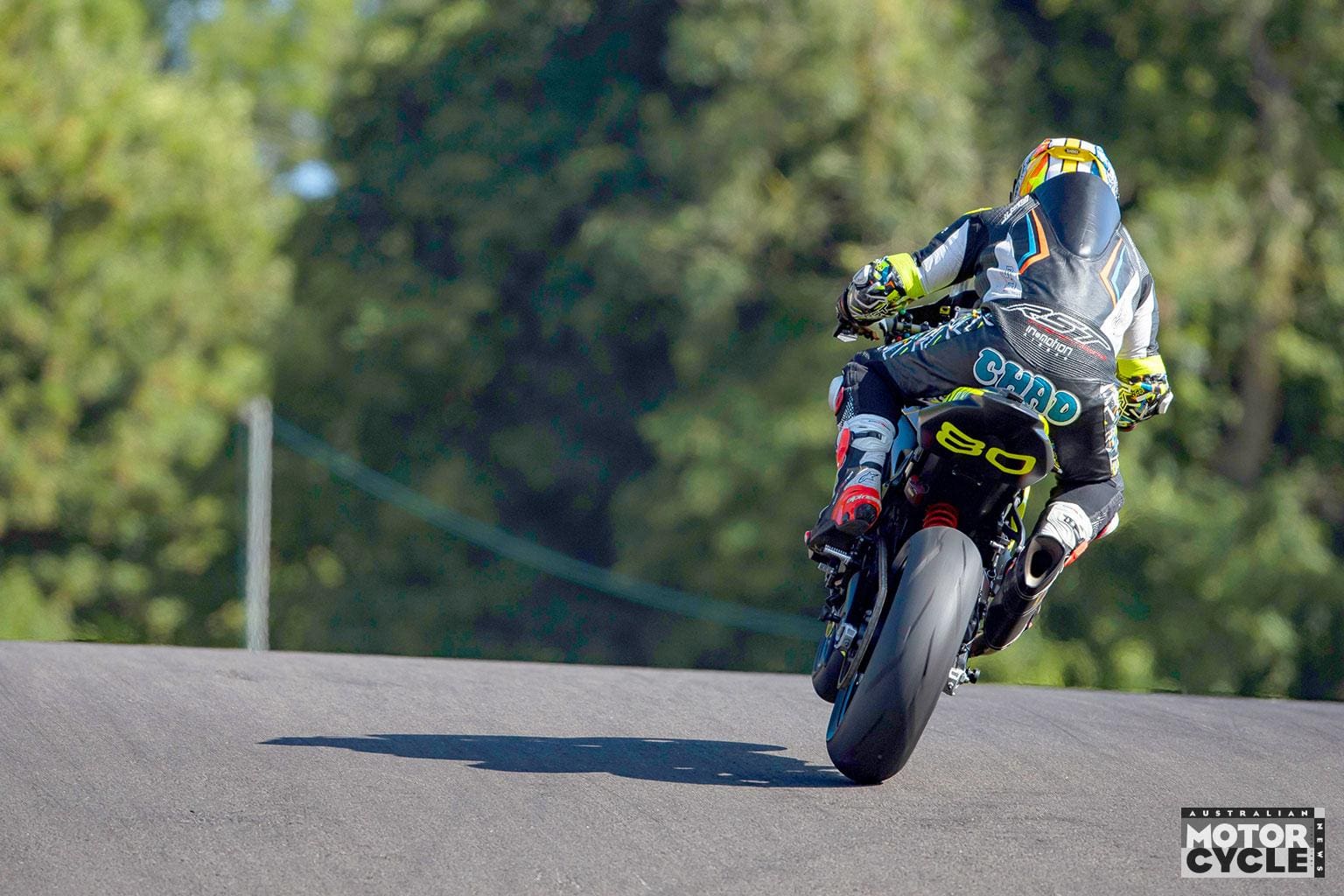
Verdict
What a dream weekend: to turn back the clock and pretend to be a racer again. The pace was fast and brutally hard but the bike made it easy.
What PHR, Triumph and the Macadam team have done is hugely impressive. Transforming a user-friendly standard Daytona 660 into a competitive race bike, which in the hands of my expert teammates is fast enough for mid-pack in the British Supersport series, is a great achievement. It’s a tribute to Triumph that the 660 can cut incredible lap times using a near-standard engine, frame, swingarm, wheels and brakes. Tweaking the standard Daytona 660 into a competitive race bike shows the potential of the standard user-friendly road bike.
Furthermore, this isn’t only a race bike for the elite. All the parts are available from Triumph via TT-star Peter Hickman’s PHR Racing. Alternatively, you might already own a Daytona 660 and want to tweak it for the road or track. Some race parts are available that will fit the standard bike, such as the fork internal kit or rear suspension.
It’s certainly opened my eyes to the ‘entry-level’ sportsbike class. Triumph’s Daytona 660 might be an easy-going road bike, but underneath that friendly smile it has claws.
PROS: A delight to ride with a package of usable power and supple suspension courtesy of a few tweaks and parts
CONS: Too little time to get completely in the groove to challenge a bunch of hungry youngsters

Want one?
PHR Racing can supply a base bike from £17,800/$A35k or you can supply the standard Daytona 660 and PHR will transform it into a race bike for £12,000/$A24k. If you want to build your own, some parts are only available from PHR (top fork clamp, bottom clamp and rear linkage) while other parts are available direct from Triumph. If you have the time and skill you can produce something similar, depending on budget and the rules of your local racing club. Start with the base bike and progress as you improve, would be our advice to novices, whether it’s racing or trackdays.
specifications
ENGINE
Capacity 660cc
Type Three-cylinder, DOHC
Bore stroke 74.04 x 51.1mm
Compression ratio 12.05:1
Cooling Water-cooled
Fueling Electronic fuel injection with ride-by-wire
Transmission Six-speed Quick Shift (race shift)
Clutch Wet, mutli-plate, slip and assist.
Final Chain drive 520 Chain 15/50 sprockets
PERFORMANCE
Power 72kW (97hp) @ 12,000 rpm (claimed)
Torque 63.7Nm @ 7500rpm (claimed)
Top speed 250km/h (est)
Fuel consumption N/A
ELECTRONICS
Type Motec
Rider aids: None
Rider Modes: Two throttle maps
Frame Tubular steel perimeter frame
Rake 23.8° (std)
Trail 82.3° (std)
Wheelbase 1425.6mm (std)
SUSPENSION
Type Bitubo
Front 43mm, fork kit fully adjustable
Rear Single rear shock, fully adjustable
WHEELS & BRAKES
Wheels Cast Aluminium 5 spoke
Front 3.5 x 17
Rear 5.5 x 17
Tyres Pirelli Diablo Supercorsa slick
Front 120/70 X 17
Rear 180/55 x17
Brakes No ABS
Front: 2 x 310mm Brembo discs, radially mounted 4-piston calipers. HEL brakes lines, 765 master cylinder
Rear 220mm disc, single-piston caliper
DIMENSIONS
Weight 168kg (std bike 201kg (wet)) 165kg with optional ally subframe.
Seat height 810mm (adjustable)
Width N/A
Height N/A
Length N/A
Ground clearance N/
Fuel capacity 15L
SERVICING & WARRANTY
Servicing First: N/A
Warranty N/A
BUSINESS END
Price From £17,800 ($A34,600) plus VAT £21,360 ($A41,500)
Colour options: Any
Contact
